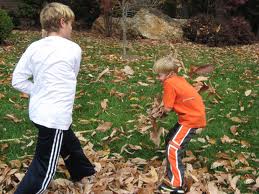Hans:
 My son is six years old, but he usually acts like he is only three or four. When he wants something he just goes for it. He just can’t wait. He almost got hit by a car last summer because he chased a ball out into the street and didn’t even stop to look. In kindergarten last year he was always in trouble because he grabbed toys or crayons away from other kids. When they were supposed to sit on the circle and listen for show and tell, he was always interrupting with his own comments; he had to tell about something he was thinking about. He couldn’t just listen to another kid or even to the teacher. When he was supposed to draw a picture or copy some shapes, he was always in a hurry. If he tried to do what they asked him to draw or write, he did it too fast and it was too messy. This year he is repeating kindergarten, but I’m afraid he won’t be ready for first grade even next year. He just doesn’t seem to be able to slow down enough to listen to the directions or to do anything carefully. He’s way behind other kids his age in self-control.
My son is six years old, but he usually acts like he is only three or four. When he wants something he just goes for it. He just can’t wait. He almost got hit by a car last summer because he chased a ball out into the street and didn’t even stop to look. In kindergarten last year he was always in trouble because he grabbed toys or crayons away from other kids. When they were supposed to sit on the circle and listen for show and tell, he was always interrupting with his own comments; he had to tell about something he was thinking about. He couldn’t just listen to another kid or even to the teacher. When he was supposed to draw a picture or copy some shapes, he was always in a hurry. If he tried to do what they asked him to draw or write, he did it too fast and it was too messy. This year he is repeating kindergarten, but I’m afraid he won’t be ready for first grade even next year. He just doesn’t seem to be able to slow down enough to listen to the directions or to do anything carefully. He’s way behind other kids his age in self-control.
Advice:
Children with ADHD are capable of appropriate classroom behaviour, but they need structure and clear expectations in order to keep their symptoms in check. As a parent, you can help by developing a behaviour plan for your child – and sticking to it. Whatever type of plan you put in place, create it in close collaboration with your child’s teacher and your child.
Kids with ADHD respond best to specific goals and daily positive reinforcements as well as worthwhile rewards. Yes, you may have to hang a carrot on a stick to get your child to behave better in class. Create plans that incorporate small rewards for small victories and larger rewards for bigger accomplishments.
For ADHD children in kindergarten, it can be a blessing and a curse. With all of the hands on activities available, not to mention short time spent on activities, ( at least in the developmentally appropriate classroom and/ or at the beginning of the school year) children can get up and move, interact, build, sing, read, play, paint, create and listen. Having to sit still and paying attention for longer periods of time can be a torture. However, since the visual, auditory and kinaesthetic stimulation of these children doesn’t diminish just because it is story time or a visitor to the class is sharing a special presentation. Modifying the seatings or creating an alternative plan for those children is imperative.
If you’re interested to in getting parental advice, getting school / home collaboration advice as well as some materials to keep it going – please contact me.
